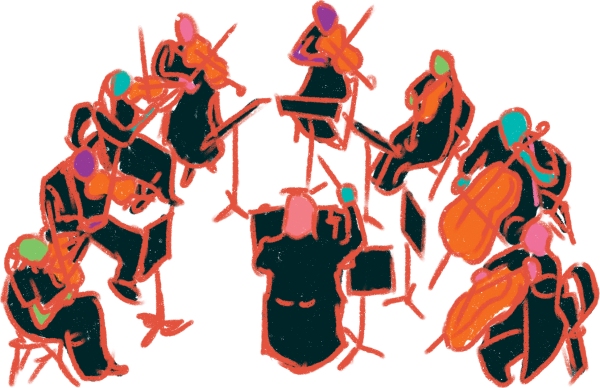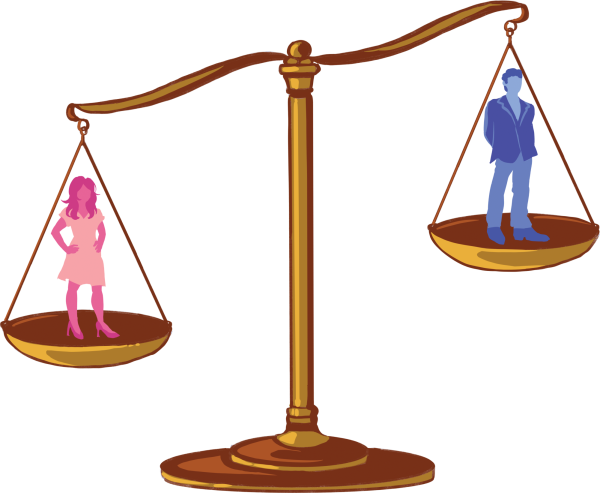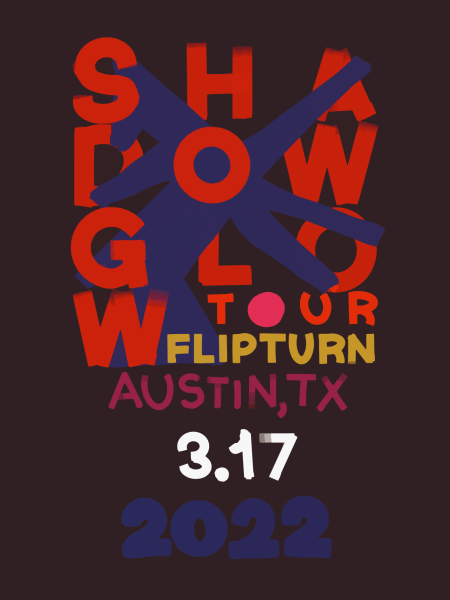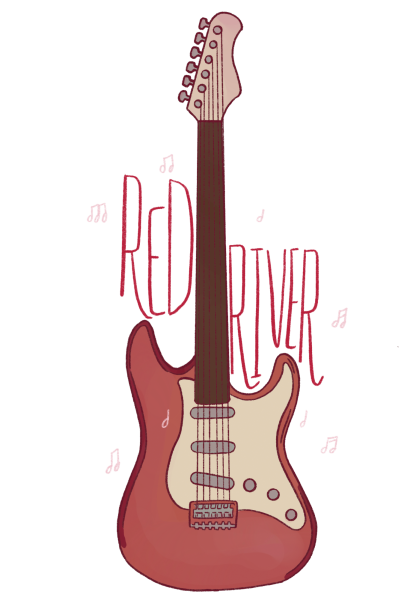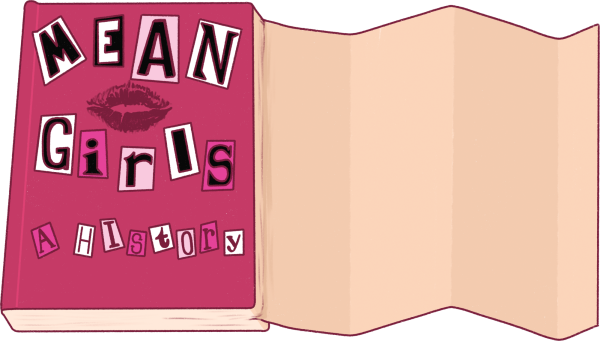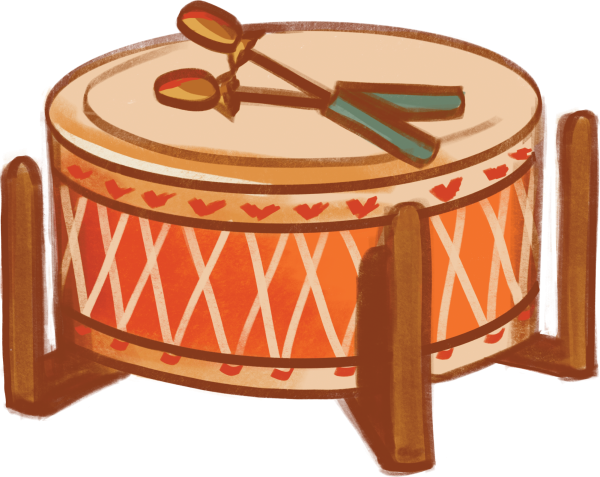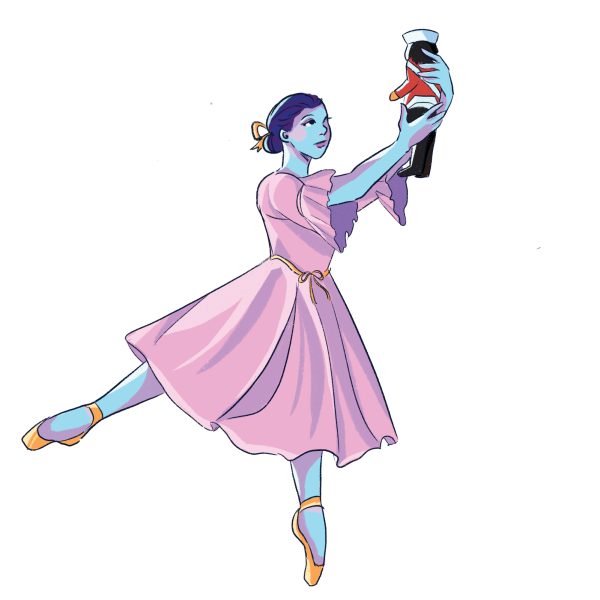Fanfic Hobby Fuels a Community: Enthusiasts Use the Medium to Add Personal Content to Fictional Works
May 28, 2021
Fan fiction refers to fictional writing based off of an existing work of fiction made by fans of the original work. Fans can write their own continuations or prequels of these original stories, sometimes introducing new characters and settings. Fan art, on the other hand, is artwork that usually involves images or animations based off of characters or scenes from already-published works. Fan art is spread through social media platforms devoted to sharing images, Instagram in particular. Artists and writers have different reasons for producing works of art and literature based on their favorite movies, books, games and TV shows but often express that fanmade pieces can add to the original work and the community as a whole.
Sophomore Helen Bigge has been writing fan fiction based on games and TV shows for about a year. She said that reading fan fiction that other people have written can add depth to the original story and provide inspiration for her own writing.
“A lot of times, I can get even more involved into the original story because of the fan works that I read,” Bigge said. “It’s just a whole new layer, and people do completely different things with the same setup and characters. It’s a great way to explore things that could have happened or focus on parts of the story that didn’t get enough attention before. Sometimes, I have 15 ideas on what to write, and then I read someone else’s fanfic, and it gives me 20 more.”
Junior Marina Kinzy has created a number of fan art pieces based on several TV shows and books, including “Six of Crows, Shadow and Bones” and “Lost in Space.” According to Kinzy, creating and looking at fan art can help create a better visual representation of the source material.
“Sometimes, fan art adds content to the media that it comes from by helping you imagine what a character or place looks like,” Kinzy said. “This is especially true for fan art based off of books. Since you can’t see the character you’re drawing, it’s very interesting to use clues from the book, as well as get ideas from other pieces of fan art, about how different things appear.”
Sophomore T-Wolf Nguyen has been writing fan fiction for about a year based on video games, particularly interpretations of characters in “Five Nights at Freddy’s,” a survival game. Nguyen said that reading and writing fan fiction can deepen people’s understanding of the original work.
“I think that fan fiction, as well as other fan content like fan art and cosplays, definitely add to the original content that it’s based off of in several ways,” Nguyen said. “For one, it helps keep the fandom going, in a sense. Through seeing everybody else’s take on what the original author or creator produced, there’s a lot of enjoyment that you can get from getting new ideas and finding new understandings of characters, and it makes you appreciate the original work more when you see what can come from it.”
Fan fiction is unique in that its general aim is not to make money off of writing a story. Nguyen said they believe that this lack of financial motivation allows fan fiction writers to focus more on representation in terms of character demographics.
“Whenever fan content is made, there’s usually a pretty heavy emphasis on minority inclusivity,” Nguyen said. “Often, what happens when the source media is being written or produced, there’s little financial incentive for most popular platforms to be inclusive. Whenever a fandom comes to life, you have a much more diverse group because the source media can attract a lot of different groups of people from all walks of life, and they can promote things like minority representation and LGBT representation by making them come to life in their characters.”
Bigge said that the community a fandom creates is what is most enjoyable about fan fiction. A fandom can contribute more to a story than one original writer can, she said.
“The thing that I most enjoy about fan fiction is really just the sheer number of ideas that are being thrown around by everybody else who’s writing,” Bigge said. “With the amount of people that make up a fandom, there’s so much more that can be explored in terms of alternate endings, history and relationships between characters. Of course, the original author is one person, and they have to be pretty good in the first place, but collaboration is always what fosters the most creativity.”
Kinzy shared a similar opinion on how fanmade content can enable the spread of ideas within fandoms. According to her, art made by other people can contribute more to her own view of the original character or scene.
“When you see a bunch of different people creating fan art of characters, even if you already know what they look like, they can still be captured in many different ways that you might not have seen before,” Kinzy said. “Even if the picture is just from a different angle or a different view, it still contributes to your understanding of the character. It’s definitely a very imaginative process where many different people can contribute to a collective idea in a creative way.”

